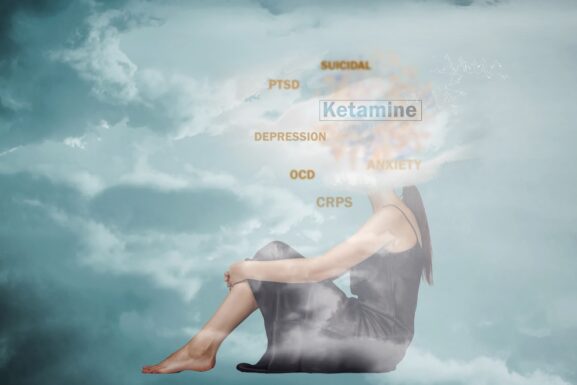New 988 Suicide & Mental Health Crisis Hotline Launches In United States
Americans experiencing a mental health crisis have a more straightforward option to reach out to for help, with the 988 suicide hotline recently launching. The announcement comes from the Federal Communications Communications (FCC), which officially designated the 988 Suicide & Crisis Lifeline on July 16.
This new, shorter phone number is more manageable for people to remember, and provides immediate access to mental health crisis services.
RELATED: What Is Ketamine Used For: From Mental Health Issues To Chronic Pain
How Does The 988 Suicide Hotline Work?
Previously known as the National Suicide Prevention Lifeline, the new 988 hotline provides a national network of more than 200 crisis centers supported by local and state sources. It also includes the Department of Health and Human Services’ Substance Abuse and Mental Health Services Administration (SAMHSA). Callers can also text 988 to receive help.
“If you are willing to turn to someone in your moment of crisis, 988 will be there,” said Xavier Becerra, the Federal Department of Health and Human Services secretary. “988 won’t be a busy signal, and 988 won’t put you on hold. You will get help.”
The National Suicide Prevention Lifeline’s 10-digit number — 1-800-273-8255 — will remain active, but calls will now route to 988.
The 988 Suicide & Crisis Lifeline aims to provide immediate crisis intervention and support. When calling 988, a trained crisis counselor will answer, listen to the caller, understand their issue, provide support, and share resources. All 988 Crisis counselors are trained to help in a variety of crises. No callers will be required to disclose any personal information.
The new 988 suicide and crisis hotline also offers assistance specifically for Veterans. Pressing “1” after dialing 988 will connect callers directly to the Veterans Crisis Lifeline. This hotline serves our nation’s Veterans, service members, National Guard and Reserve members, and those who support them. For texts, Veterans should continue to use the Veterans Crisis Lifeline shortcode: 838255.
RELATED: Ketamine Therapy For PTSD: A Solution For Veterans?
The Mental Illness Crisis
According to the National Alliance on Mental Illness, “one in four fatal police shootings between 2015 and 2020 involved a person with a mental illness,” and “an estimated 44 percent of people incarcerated in jail, and 37 percent of people incarcerated in prison, have a mental health condition.”
People with mental illness are booked into the nation’s jails around two million times yearly, and millions end up waiting in emergency rooms for hours in need of care. Many of these facilities are ill-equipped to address mental health crises.
Suicide is a leading cause of death for people aged 10-34. In 2020 alone, the U.S. had one death by suicide roughly every 11 minutes. In May 2020, the Senate unanimously passed S. 2661, providing funding for the 988 infrastructure and crisis response services. This bill required the Federal Communications Commission (FCC) to designate 988 as the universal telephone number for a national suicide prevention and mental health crisis hotline.
The bill also adds that, “a state may impose and collect a fee for providing 988 related services. However, this fee must be held in a designated account to be spent only in support of 988 services. The FCC must submit an annual report on state administration of these fees.” These fees will fund the services and circumvent issues the former National Suicide Prevention Hotline faced.
“Ever since its launch in 2005, the existing 10-digit lifeline has seen increasing use. But until recently, local call centers received very little federal funding.
‘They’ve been operating on a shoestring for many, many years,’ says John Draper, the National Suicide Prevention Lifeline executive director. ‘Many centers have closed because of lack of resources in recent years.’
According to the HHS, in 2021 the lifeline received 3.6 million calls, chats, and texts. But a 2021 report by SAMHSA found that the current system is able to respond to only 85 percent of calls, 56 percent of texts and 30 percent of chats.”
via NPR
Moving Forward
Health officials project that the number of calls, chats, and texts will at least double in the first full year after 988 goes live. According to early data, calls have already increased by 45 percent.
“This is the beginning of a story,” explains Chuck Ingoglia, CEO of the National Council for Mental Wellbeing, to NPR. “It’s going to continue to require investment at the federal level, at the state level, at the local level, to really make sure that this reaches its potential.”



